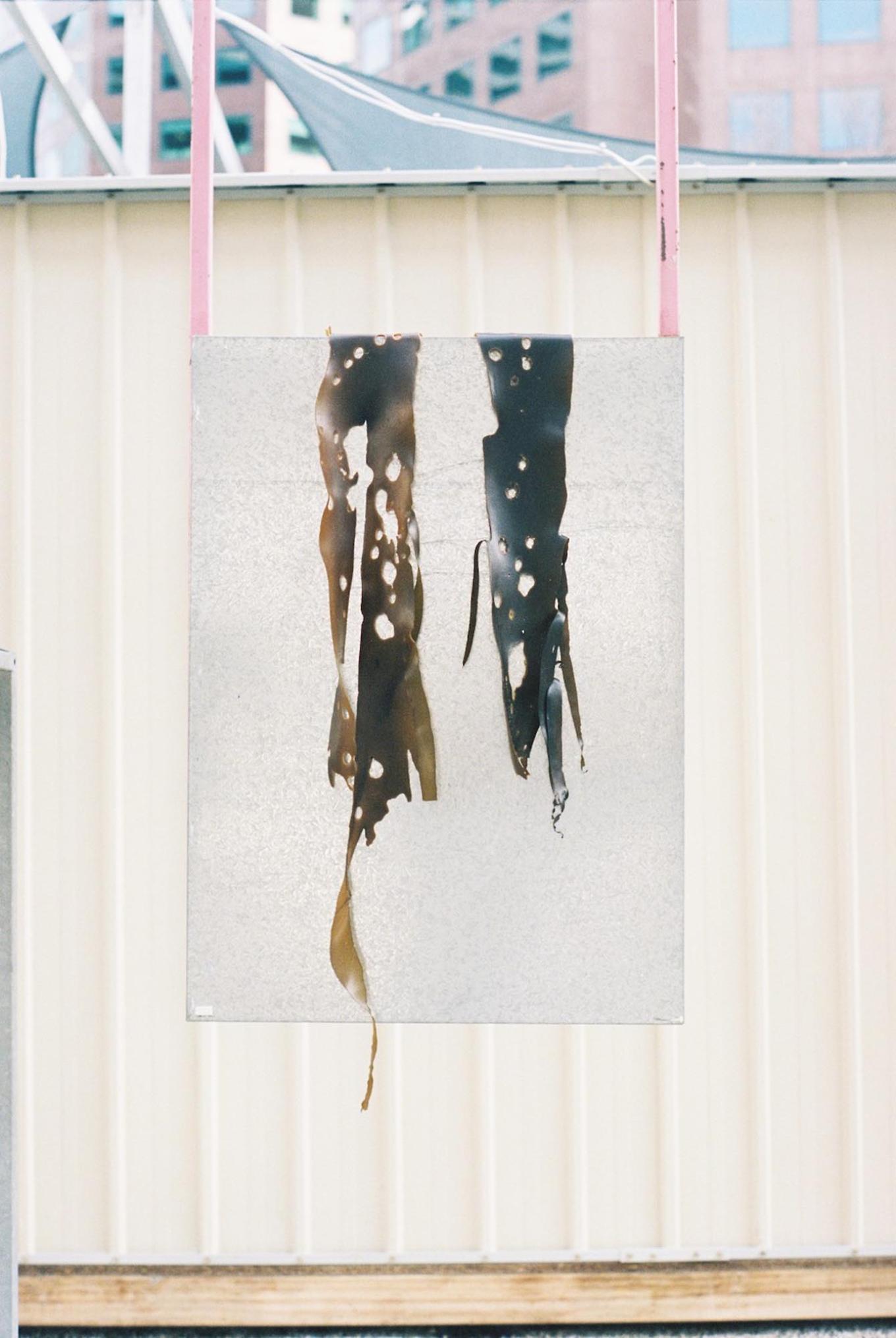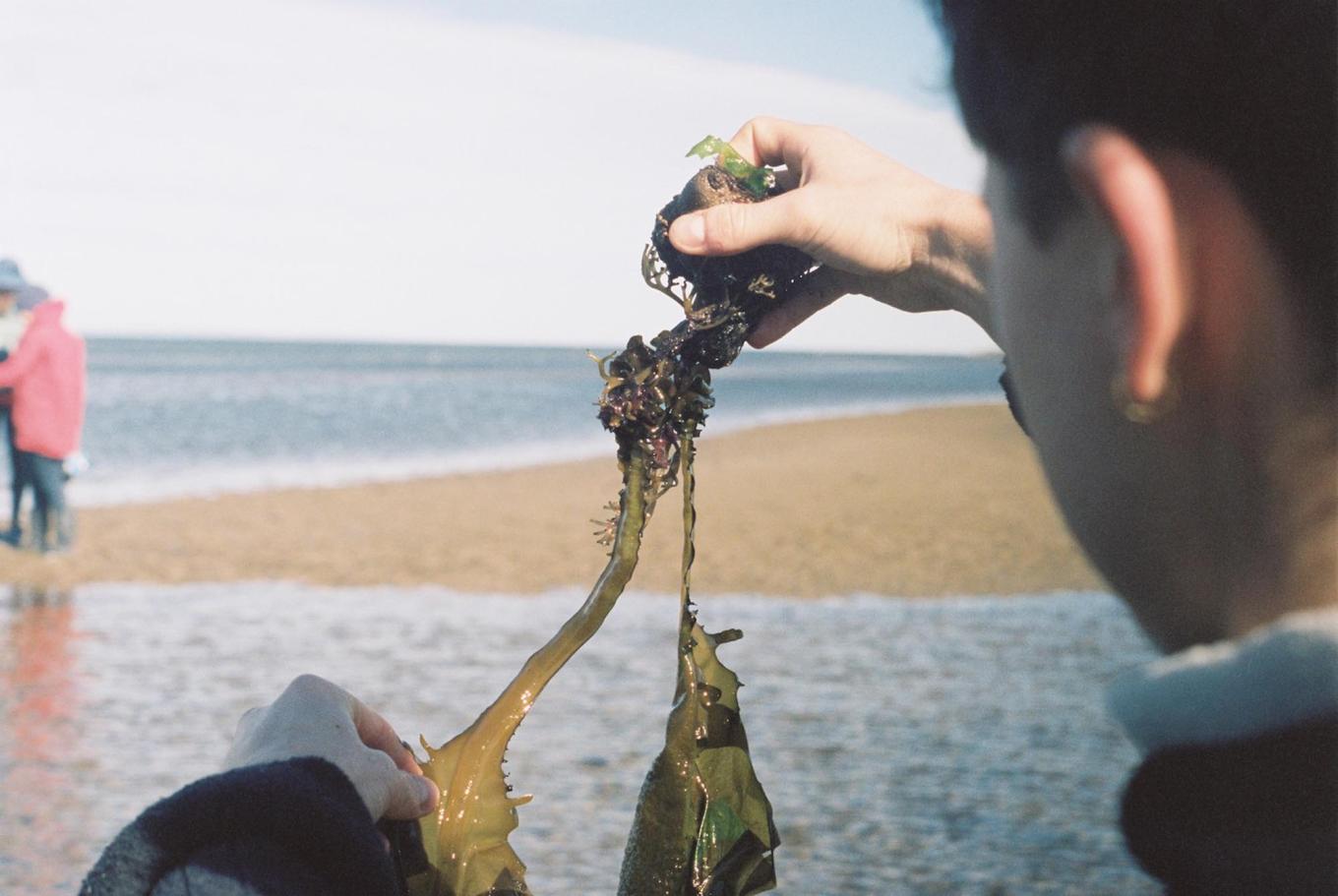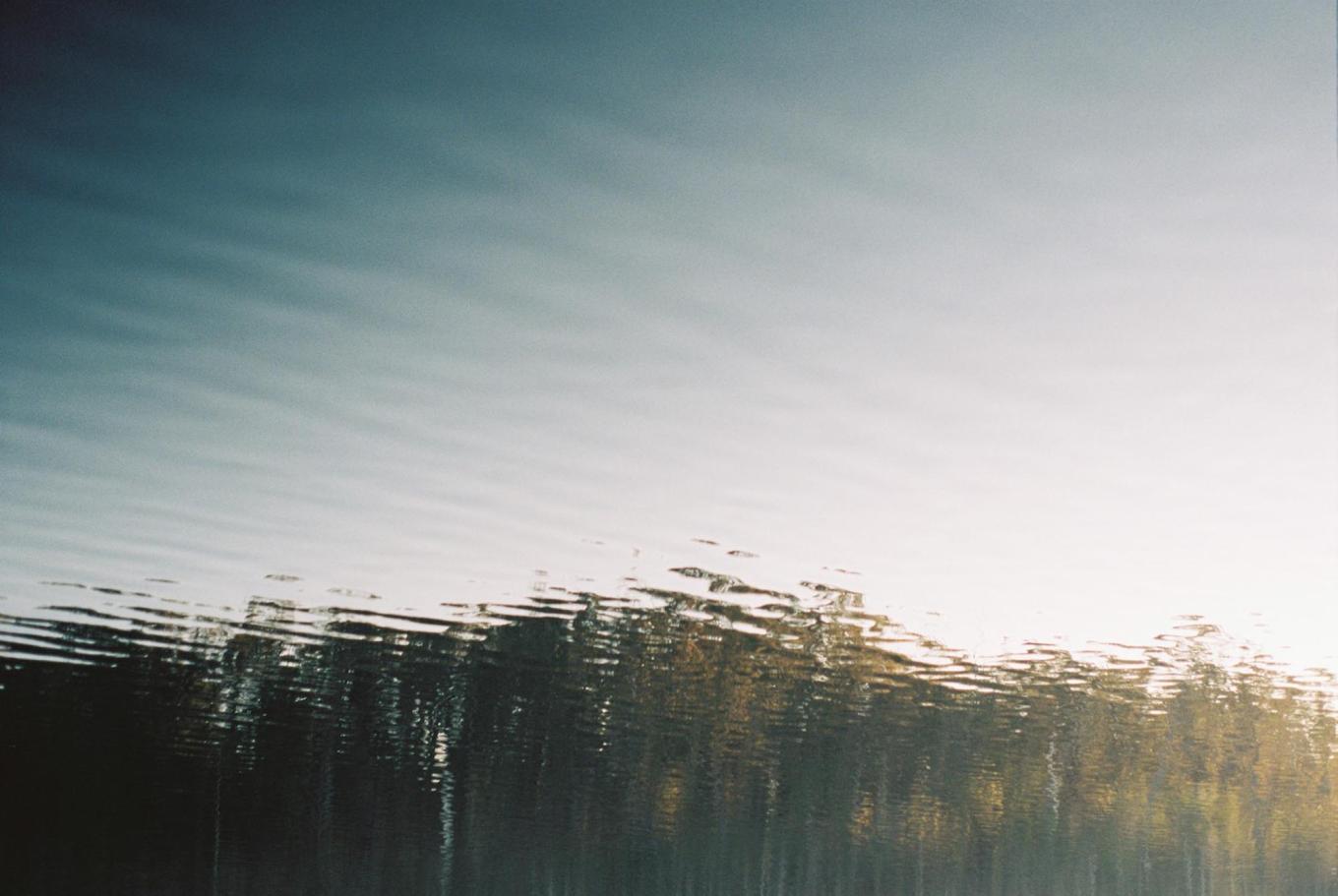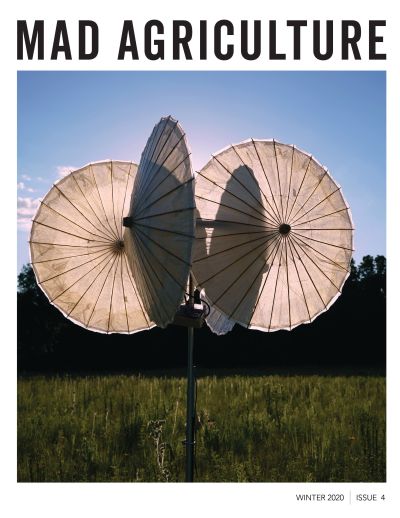
The Mad Agriculture Journal
A Cry for Kelp
Published on
November 30, 2020
Written by
Mathew Bate
Photos by
Mathew Bate
As the waves of climate collapse crash into our shores, what might we learn from taking a breath and diving underwater?
Lee esto en español.
I remember being in the shallows. Little floaties hugging my little arms. Goggles on, face down, blowing bubbles. Coming up for air with lots of snot and flapping arms. Then heading back down again to accidentally drink pool water.
We learn at a young age that underwater, the breath of life pirouettes towards the surface in bubbles. We also learn pretty quickly, when we emerge gasping, that the bubbles eventually run out. It’s in water that we can finally see the invisible air that pumps our heart, the invisible air that we suppose is always kind of just hanging there, the invisible domain that we now take for granted.
If we go back a really, really long time – like 3.5 billion years – all life was underwater. Then, slowly, the very first tiny breaths of life started bubbling to the surface. Microscopic lifeforms were somehow taking sunlight, water and carbon dioxide and turning it into food and oxygen. Incredible. Over time these organisms created enough oxygen to enable the conditions for life to surface above the water. We call this process photosynthesis, an early and potent form of magic that eventually gave rise to the unfathomably beautiful world from which we were born, a world that is now suffering.
David Abram, a cultural ecologist and philosopher, said recently in an interview with Emergence Magazine that “climate change is the simple consequence of forgetting the holiness of this mysterium in which we’re bodily immersed.” The modern mechanical mind sees creation as bits and pieces. It turns mystery into machine. It forgets the magical weirdness that binds it all together. It forgets that the world is not an engine running out of fuel, but a living, breathing miracle. It forgets that everything is alive, awake, communicating, bubbling.

Abram reminds us that fundamental triggers of climate breakdown are stories, songs and patterns that are being forgotten. A path forward opens up, therefore, when we start reconnecting, remembering, reconciling and reciprocating. This is a path embodied by traditional custodians, exemplified by indigenous knowledge systems that sustained worldly exuberance before the will of colonialism. But we haven’t forgotten, it’s just that our modern world seems to be in the business of forgetting. This is where regenerative agriculture fits in. Regenerative agriculture represents a complete moral, spiritual and practical reform in the way we relate to landscape, a re-emergence of our collective responsibility as a custodial species.
The regenerative movement permeating through our social and ecological landscapes is a timely reminder of our interconnection with the human and more-than-human community. It’s marked by a conscious and intentional movement into a view that the world, presenting itself to us in each moment through quirky relational phenomena, is awake. This holistic worldview is regenerative agriculture in a nutshell. Whereas the reductionism of industrial agriculture treats symptoms, the holism of regeneration treats systems. This is why regeneration is earmarked by intense curiosity and observation on the part of the human manager, as the farmer’s senses are re-tuned to the melody emanating from the landscape. But while so many of our landscapes are humming to the song of regenerative work, there’s one particular landscape that isn’t getting as much attention: the ocean.

When we think about metaphors relating to the infinite, images of the ocean’s vastness likely come to mind. It is perhaps because of this, as well as our lack of gills, that we so willingly exploit and extract from underwater worlds. Imagine taking a bulldozer that’s 40 feet tall and 200 feet wide and plunging into a rainforest. This is what industrial fishing methods like deep-sea or bottom trawling do to the seafloor. 90 percent of our large fish have been wiped out in the past 50 years and because the ocean absorbs 25 percent of the carbon we pump into the atmosphere, ocean acidity – which increases as the amount of carbon in the water increases – has risen by 30% since the industrial revolution. The ocean hasn’t felt this rapid a change in acidity since the last mass extinction event around 56 million years ago. The data is horrific, yes, but I am absolutely certain that there are forgotten stories submerged in our ocean that if re-told, are essential to our regenerative journey.
We’ve forgotten that life started in the shallow water all that time ago and that the ocean, with the myriad creatures swimming, floating and dancing in it, is as important to planetary health as the air we breathe. In fact, it’s where most of it comes from. Did you know that half the oxygen in the air comes from a very special group of creatures in the ocean? They’re called marine algae, ancestors of the earliest of photosynthetic life forms that blew bubbles of life all those years ago. There are thousands of species of algae, the largest group of which we call seaweeds.
Seaweeds have got to be one of the most poorly named wonders of the natural world. Not only are seaweeds themselves incredibly fast-growing carbon sequesters – giant kelp can grow two feet per day and reach a gangly height of 150 feet in a matter of months – they create dense underwater forests that provide refuge, shelter and food for countless marine creatures. A kelp forest can sequester more carbon than a tropical rainforest of the same size and by removing carbon from the water they reduce ocean acidification. Then there’s the food chain. Seaweed and smaller forms of marine algae are fundamental to the cycle of nutrients that supports all life in the ocean. Unfortunately, seaweeds have been dramatically impacted by warming ocean temperatures. The once legendary kelp forests off the coast of Tasmania, Australia – near where I live – have almost entirely disappeared in the past two decades for this very reason.

Because of the immense regenerative potential of seaweeds and their importance to healthy ocean ecosystems, a salty community of water-loving people around the world are passionately protecting the remaining kelp forests. But there is also room for ocean agriculture, a regenerative method of fishing just like land-based regenerative farming, that aims to heal ocean ecosystems while also creating food and fibre. Bren Smith, a commercial ex-fisherman turned restorative ocean farmer, has come up with what he calls 3D ocean farming. 3D ocean farming is a multispecies polyculture, incorporating seaweeds and shellfish, that look and function like vertical underwater gardens. TIME Magazine dubbed it one of The 25 Best Inventions of 2017. The farms require no synthetic inputs, no fresh water and no feed. Seaweeds provide the environment for shellfish to thrive, filter nutrient runoff from waterways, buffer acidity levels, and then can be harvested and turned into food, biofuel or bioplastics. Since there are no fences, fish and other marine animals are free to come and make the farm their home. Smith is so passionate about sustainable ocean farming that he’s launched a not-for-profit called GreenWave that is nurturing the next generation of regenerative ocean farmers.
Seaweed’s role in reforesting our underwater worlds and gardens is pretty extraordinary. But, my love for seaweed is not due to the innumerable ways we can use it for our benefit in the face of a climate catastrophe. I love seaweed because it is a valuable teacher.
Robin Wall Kimmerer, a Potawatomi writer and botanist, says in her enchanting book Braiding Sweetgrass: Indigenous Wisdom, Scientific Knowledge, and the Teachings of Plants, that there is a significant difference between learning about natural wonders and learning from them. For Kimmerer, all the more-than-human intelligences sharing life with us on this planet have songs that we can hear if we care to listen. So, what song is seaweed singing?
Seaweed’s strength does not come from its ability to predate, exploit, extract or to trick, it comes from its ability to create the conditions for a connected community. Seaweed’s song is an orchestration, a concert filled with many voices from the depths of the ocean. Seaweed teaches us that as environmental stewards, our strength comes from our ability to cultivate and sustain harmony in our world and to be grateful for that gift. If we want to challenge the modern machine’s motto that says “out of sight, out of mind”, we need to be mindful of the unseen. It’s time to look and listen in the places that we’ve forgotten.
It’s about time we popped those goggles on and headed back down to blow bubbles of life back into the ocean. And when we rise snotty and spluttering with a mouthful of water, we might remember the holiness of the mysterium from which we gasp for air and in which we are bodily immersed.

